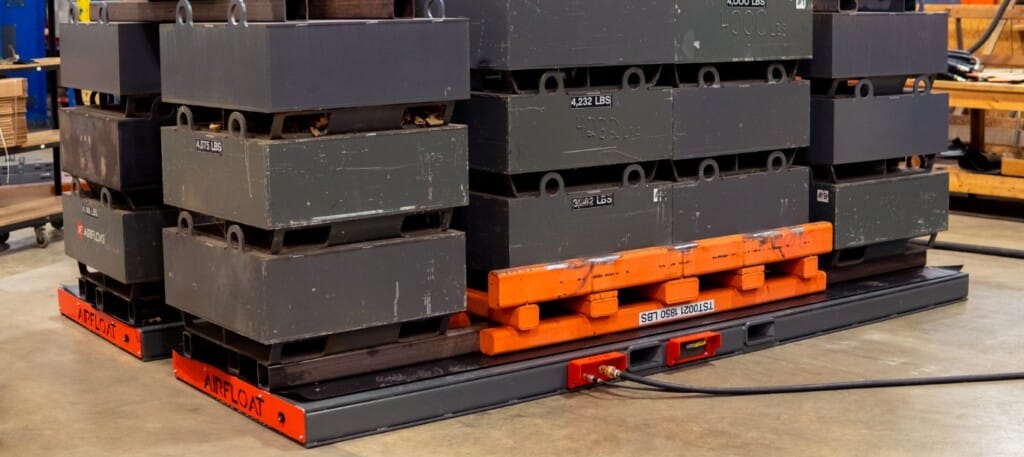Aluminum vs. Steel Air Planks: Understanding the Trade-Offs

March 28th, 2025
Share:
When it comes to moving heavy loads with precision and care, Air Planks are a practical solution used across a variety of industries. They’re designed to make transport smoother, protect floors, and reduce the need for traditional rigging equipment. But when selecting the right Air Plank for your application, one key question always comes up: aluminum or steel?
Both versions have their place, and understanding the strengths and trade-offs of each can help you choose the best option for your operation.
Aluminum Air Planks: Lightweight and Easy to Handle
One of the biggest advantages of aluminum Air Planks is their lightweight construction, which makes them easier to move and position without additional equipment. This is especially valuable in facilities where teams are frequently repositioning equipment or don’t have overhead lift systems available.
Despite being light, aluminum planks are durable and built for repetitive use—perfect for applications where loads are consistent in size and weight, like moving transformers or modular components from point A to point B.
Typical Air Plank Weight Range:
– 12″ wide aluminum planks: ~60–100 lbs
– 17″ wide aluminum planks: ~80–120 lbs
These are used in sets of two or three, depending on the load and distribution requirements. However, because of their lighter structure, aluminum planks should not be point-loaded, especially across the center, as they can bend or flex under uneven stress. The load should always be evenly distributed across the plank.
Steel Air Planks: Built for Heavier, More Demanding Loads
Steel Air Planks, on the other hand, are designed for heavier-duty applications. They’re considerably more robust, allowing for point loading—which means a load can be placed directly in the center without compromising the integrity of the plank.
If your operation involves moving unpredictable or uneven loads, or if you require higher weight capacity, steel is the better choice. The trade-off is their weight: steel planks are significantly heavier and require more effort to position, often needing a team or lifting assistance.
Aluminum Air Planks
-
Lightweight (60–120 lbs)
-
Easy to Carry and Reposition
-
Moderate Load Capacity
-
No Point Loading Tolerance
-
Repetitive, Uniform Loads
Steel Air Planks
-
Heavier and More Rugged
-
May Require Equipment to Move
-
High Load Capacity
-
Yes Point Loading Tolerance
-
Heavy, Variable Loads
Choose Based on Your Needs
If ease of handling, speed, and portability are your top priorities, Aluminum Air Planks will likely be the best fit. They work well in repeat-use environments and with trained teams that follow best practices like load distribution.
If you’re handling larger, heavier items and need maximum durability, Steel Air Planks are the more appropriate solution—even if it means sacrificing a bit of maneuverability.
Still unsure? Reach out to our team and we’ll help evaluate your application and recommend the right plank setup for your load and facility.













